
Blues Chart
The Blues Chart displays a typical 12 Bar Blues progression as well as providing guitar tabs for a versatile Blues guitar rhythm.
Blues Harp Cheat Sheet for Harp N Guitar - Blues Chart
Lesson Info
Difficulty: You should be cranking out this Blues guitar rhythm fairly quickly.
Lesson Length: 13:55
Instructor: George Goodman
Learn the 12 Bar Blues progression and pick up an excellent, versatile Blues rhythm guitar pattern.
Recommended Gear
Takamine EG541SC
I am playing my black tak in this one.
This is a Takamine G Series EG541SC bought in North Carolina when I was playing in a band called Double Take.
Specs:
Top - Solid Spruce
Back - Nato
Sides - Nato
Finger Board - Rosewood
Electronics - TK40
Finish - Gloss Black
Check out more Takamine G Series Guitars
The C harmonica is required here.
I often play through a Shure Green Bullet microphone Model 5200 and Fender Super Champ amplifier
The Hohner Harmonica Neck Holder fits harmonicas up to 7-1/2" long.
With a long-lasting nickel-plated finish, this harmonica rack is adjustable and fits any neck shape.
Help File
12 Bar Blues Chart - Download the Latest
The Blues Chart has been updated to be easier to read and print out.
Before starting, make sure you've got the latest: 12 Bar Blues Chart
This displays a typical 12 Bar Blues progression and in this particular case displays the Blues in the key of E. This is one of the most common keys for the Blues because it allows the guitarist to play in an open string format.
Guitar Tabs
If you are new to guitar tabs, let me break it down for you.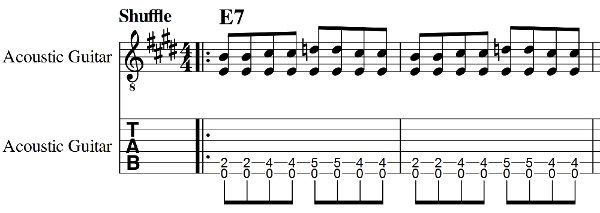
Guitar tabs consist of six lines; each line representing a string on the guitar. The top line in the tab represents the first string or high E string. The next one down in the tab is the second string, B. The third line down is the third string, G. The fourth line from the top is the fourth string, D. The fifth line from the top is the fifth string, A and finally the bottom line represents the sixth string, low E.
The numbers on the tabs represent the fret in which to put your finger.
Looking at the first bar or measure of the tab above, the sixth string is played open. This is signified by the number 0.
0 means play the string open – you don’t place a finger on any fret on the sixth string.
The tabs in the first bar also shows that you need to place a finger on the second fret for two notes, then on the fourth fret for two notes, then on the fifth fret for two notes and then back to the fourth fret for two notes.
Place your left hand so that your first or index finger is in the second fret and use this finger for playing the fifth string, second fret.
Space your left hand fingers so that each of the fingers are in their own fret. Your second or middle finger will be in the third fret. In our tabs there is no 3 or fretting in the third fret, so this finger won’t be used for this pattern. Place your third or ring finger in the fourth fret and use this finger on the fifth string. Finally place your fourth or pinkie finger in the fifth fret and use this for playing in the fifth fret on the fifth string.
This is a fairly easy but great sounding rhythm guitar pattern that only requires playing two strings and for most of the pattern, one of the strings is played open.
During the chord E7, the sixth string is open while the notes change on the fifth string. The exact same thing happens during A7 but with the fifth string open and the notes changing on the fourth string.
The B7 is more challenging and requires placing your first finger on the fifth string in the second fret, your third on the fourth string in the fourth fret and your fourth finger on the fourth string in the sixth fret. This stretch will take some practice.
Chord Progression
This progression is known as the 12 Bar Blues. This is because it consists of 12 bars or measures of music that repeat throughout the song.
Some variations to this progression are common but this represents the most common form of the 12 Bar Blues.
The Blues Chart displays the 12 Bar Blues in the key of E.
In the first four bars, the I7 chord is played.
If we look at the Blues Harp Cheat Sheet in the I7 column for Blues key E, we see the chord E7.
Looking at our Blues Progression we see E7 in the first four bars.
In bars 5 and 6, the IV7 chord is played. Again back to our Blues Harp Cheat Sheet, we see the IV7 chord for the Blues key of E is A7. Our chart shows A7 in bars 5 and 6.
For bars 7 and 8 we are back to the I7 chord, E7 in our example.
In bar 9, we play the V7 chord. The V7 chord in the key of E is B7.
Bar 10 is the IV7 chord, A7.
Bar 11 is back to the I7 chord, E7.
Finally in Bar 12 we play the V7 chord.
Bars 1 – 4: I7
Bars 5 and 6: IV7
Bars 7 and 8: I7
Bar 9: V7 | Bar 10: IV7 | Bar 11: I7 | Bar 12: V7 (I7 if last time around)
The Blues Rhythm
Notice at the top of the music is the word Shuffle which indicates the style to play.
This is one of the most important elements to create the Blues feel. Shuffle is similar to Swing.
Each bar of music in our 12 Bar Blues is made up of four beats. Each beat can be divided into two notes, called eighth notes.
The shuffle is produced by giving the eighth note that lands on the beat, 2/3 of the beat instead of half the beat. The eighth note that lands on the offbeat only receives 1/3 of the beat.
Because the offbeat eighth note is reduced in duration, it is usually accented to give it an extra push. This is what drives the Blues rhythm.
Getting a feel for where the offbeat eighth note lands is a huge part of getting the Blues sound. Rarely is a Blues ‘straight’ where the eighth notes are of equal duration.
5 Pack Case of Hohner Special 20s
What do I like about the Special 20s?
Great Sound, Smooth Comb, Responsive to Bending - but not loose, Affordable. I play Special 20s more than any other model.
Martin Acoustic Guitar Strings
If it's been a while since you've changed your strings, you won't believe the difference in the sound. These are some excellent Martin strings. Need I say more? Totally affordable.
Hohner Harmonica Holder
The Hohner Harmonica Neck Holder fits harmonicas up to 7-1/2" long, has a nickel plated finish and fits any neck shape.
I have used a similar holder for over 25 years. This no-nonsense holder will work for you.

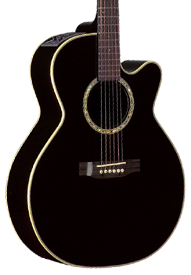
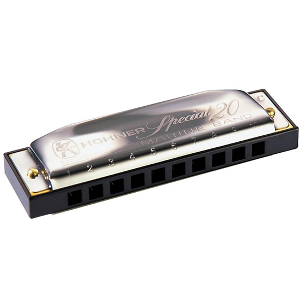



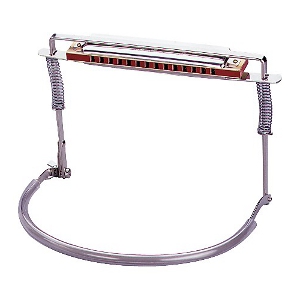
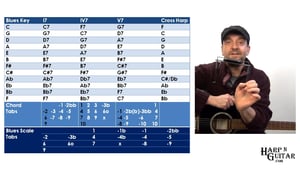
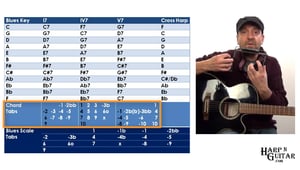
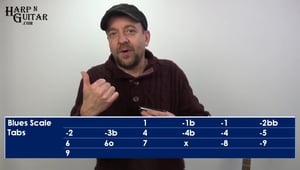
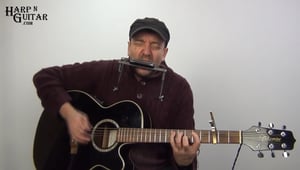
Leave a Reply